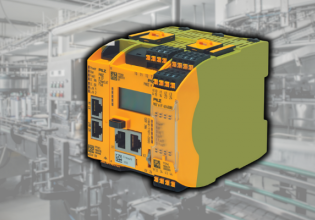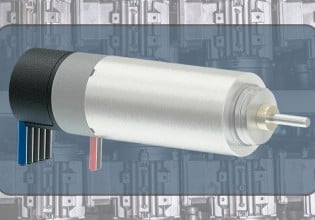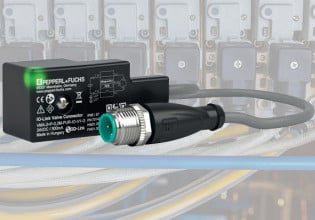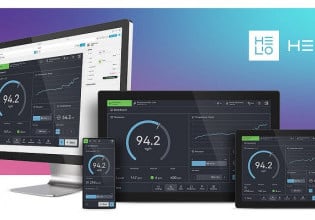Efficient Temperature Control with Liquid Cooling Systems
This article explores liquid cooling systems for accurate thermal management for high power and high-heat-generating equipment and systems.
Using liquids for heat transfer is an important cooling method in many industries to maximize performance and operational life for thermally sensitive electronics and systems. As new systems feature more functionality in smaller, more compact form factors, precise temperature control has become more critical. Liquid cooling systems can dissipate a large amount of heat in densely packed electronic enclosures to facilitate more complex system designs.
Liquid cooling systems combine a high capacity for transferring waste heat with a high coefficient of performance (COP) to move heat more efficiently and quickly than other cooling technologies. This enables liquid cooling systems to deliver more accurate thermal management for high power and high-heat-generating equipment.
Liquid cooling systems are unique to the thermal management market in that they use a liquid coolant to transfer heat. These self-contained units recirculate a coolant to a predefined temperature set point. There are two types of liquid cooling solutions:
- Liquid heat exchanger systems
- Liquid chillers
Liquid heat exchanger systems cool the coolant in a liquid circuit either by the use of a liquid-to-liquid heat exchanger or a liquid-to-air heat exchanger. In the first case, the coolant is often cooled below ambient temperature using a facility (often called primary) coolant loop. Alternatively, the air-cooled system will cool the coolant to near ambient temperature. The remainder of the systems consist of a pump to circulate the coolant, often a tank to ensure the pump is constantly being supplied with liquid, and a liquid circuit to transfer coolant from the heat source to the liquid cooling system.

Figure 1. Liquid-to-air vs. liquid-to-liquid cooling
Liquid chillers (recirculating chillers) encompass a compressor system instead of a liquid heat exchanger assembly. It is used to cool the coolant to well below ambient temperatures and dissipate heat to the outside environment.

Figure 2. Liquid chiller system
Additional features can be included to add temperature control, variable flow control, bypass control, coolant filtration, and electronics in order to meet unique monitoring and control requirements.
Advantages of Liquid Cooling Systems
Liquid cooling systems have several advantages:
- High Heat Pumping Capacity: Liquid heat exchangers can reduce the thermal resistance of conventional heat sink fan dissipation mechanisms by a factor of 10 or more. This is due to the poor thermal properties of air versus coolants such as water.
- High Heat Flux Density: Liquid cooling systems can remove up to five times the amount of heat per square area over conventional air cooling systems. This becomes advantageous in densely packed electronics with limited space to accommodate an air cooling mechanism.
- High COP: For example, if an application requires cooling a heat load of 3 kW, a standard compressor-based refrigeration system typically requires around 1 kW of energy to provide the proper cooling, which is more efficient compared to other technologies.
- Heat Routing: Liquid cooling allows the integration of a small heat exchanger to be located at the heat source, which then routes heat away through a liquid circuit. This is advantageous in densely packed electronics where a conventional air-cooling system pushes air thru the system and potentially adds heat to the system from other hot electronics in close proximity.
- Rapid Cool Down: Cool-down time is a function of cooling capacity. Liquid cooling systems have larger cooling capacities than conventional heat sink fan mechanisms, which will reduce the time it takes to reach temperature.
- Lower Noise: Systems with high heat removal requirements of one kilowatt or higher require much larger fans to generate the airflow needed to dissipate heat. This makes the air cooling system noisier and exposes the system to a higher vibration.
Configuring the System
Liquid Cooling Systems can use different types of fluids such as water, deionized water, glycol/water solutions, dielectric fluids (fluorocarbons), transformer oil, hydrofluorocarbons (HFCs) refrigerants and natural refrigerants. Selecting the right coolant for an application requires an understanding of the characteristics and thermophysical properties of the fluid including performance, compatibility, and maintenance factors. Ideally, the coolant fluid is an inexpensive and non-toxic liquid with exceptional thermophysical properties and long operating life. Each coolant option offers different properties, such as thermal conductivity, specific heat, and thermal stability, but their usage will ultimately depend on their reliability and economic factors.
Because liquid cooling systems can be quite complex, the optimal liquid cooling solution is often a variation of a standard solution or a custom configuration. There are many unique attributes that need to be taken into consideration depending on the liquid cooling system application. Many applications require precise temperature control of multiple liquid circuits, or multiple pressure settings in order to accommodate both low and high-pressure drop conditions.
Laird Thermal Systems’ liquid cooling systems are designed to maximize temperature stabilization at above, below, or equal to ambient temperature. Systems are compatible with water, water- glycol, transformer oil, or various corrosion inhibitors. With more than 50 years of experience in the design, manufacture, and servicing of liquid cooling systems, liquid cooling solutions from Laird Thermal Systems can be found in the analytical, medical, industrial, and semiconductor markets.






